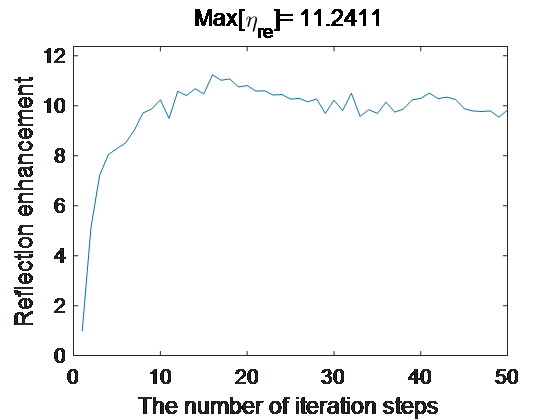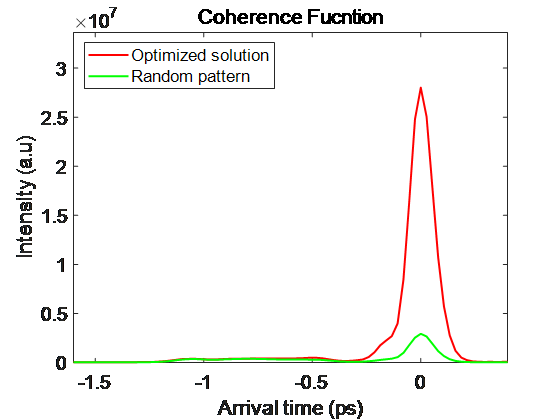mainmenu
Time-gated iterative phase conjugation of reflected wave
Optics and Photonics Congress 2019

Abstract: Light energy needs to be delivered efficiently to a target object for optical bioimaging and photo-therapy. However, multiple light scattering in biological tissues reduce light energy delivered to a target object by means of wave diffusion. Here, we propose an iterative phase conjugation of the time-gated backscattered waves to enhance the efficiency of light energy delivery. Since the proposed method is much faster than the previous methods, it will facilitate the transfer of techniques to the in vivo applications.
1. Introduction
In the field of optical imaging and therapy, where light is used to diagnose or treat disease, it is important to deliver sufficient light energy to a target within the biological tissues. However, the tissues give rise to multiple light scattering and the spatial spread of the propagating waves as they are complex media composed of structures with various refractive indices. For this reason, the light energy delivered to a target object is steeply decreased with the increase of depth.
In previous study, we proposed methods of focusing light energy on the target inside the scattering medium by controlling multiple scattering waves [1, 2]. We delivered more than 10 times light energy to the target under the mouse skull without damaging to the skull. However, previous method requires the acquisition of thousands of images to construct the matrix, and the computation time increases exponentially with the increase of view field. Therefore, it is highly vulnerable to vibrations and movements occurring during measurements and computation.
Here, we combine the phase conjugation with time-gated measurement to maximize the intensity of multiple scattering waves at the target object.
2. Experiment
2.1 Sample preparation
To demonstrate enhancing light energy delivered to the target object within a scattering medium, we placed a 10 μm-diameter silver disk embedded within 1 μm-thick polymethylmethacrylate(PMMA) layer. And, a 100 μm-thick mouse skull was placed on the silver disk target.
2.2 Experimental setup
We constructed a reflection-mode interference microscopy using an ultrafast Ti-sapphire laser (center wavelength: 780 nm, spectral bandwidth: 10 nm) as a light source. The wavefront of output beam was shaped by a spatial light modulator. We adjusted optical path length of the reference beam by a scanning mirror to choose gating time of the sample beam. A tilted reference beam was generated by a diffraction grating to measure the time-gated and complex-field images.
2.3 Experimental process
We measured backscattered field at the target flight time. Then, conjugated reflection phase was sent back to sample. By repeating this process iteratively, we found the pattern that can enhance light energy delivered to the target object.
2.4 Results
As shown in Fig.1, the intensity of time-gated reflection increased rapidly and saturated within 10 iterations. The target reflectance was over 10 times larger than initial random patterns, and the temporal response was enhanced at only target flight time as shown in Fig.2.
4. Figures

Fig.1. Reflection enhancement at the target

Fig.2. Reflection temporal response
4. Conclusion
We found the pattern of illumination that can effectively deliver energy up to the similar degree as the previous method, but with only a few rounds of image acquisitions. In doing so, the measurement time is shortened by hundreds times. In addition, since the pattern is updated at each step, the pattern changes adaptively to the vibrations or movements of sample. These advantages are expected to make the proposed method useful for real-time optical imaging or therapy.
References
[1] S. Jeong et. al., “Focusing of light energy inside a scattering medium by controlling the time-gated multiple light scattering,” Nat. Photonics, 12(5), 277-283 (2018).
[2] S. Jeong et. al.”Iterative optimization of time-gated reflectance for the different light energy delivery within scattering media”, Opt. Express, 27(8), 10936-10945 (2019).


